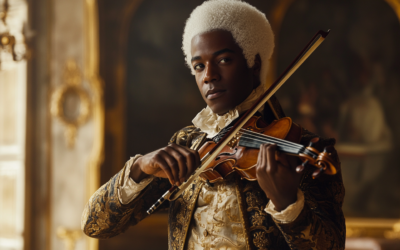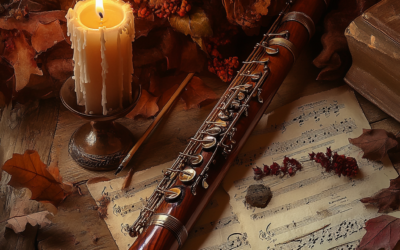MozartrazoM
Quirino Gasparini’s Rediscovered Masterpieces Take the Stage in Bern and Basel
On December 14th and 15th, a significant event in music history will unfold as the Camerata Rousseau, under the direction of Leonardo Muzii, presents previously unperformed works by Quirino Gasparini.
A Historic Moment for Music
These concerts in Bern and Basel mark the world premiere of the aria Al destin che la minaccia from Gasparini’s Mitridate, re di Ponto (1767), which was famously plagiarized by Mozart in his own version of Mitridate.
These performances are an opportunity to reassess Gasparini’s influence on 18th-century music and uncover the legacy of a composer whose work has often been overshadowed by others. The program also features a concerto for harpsichord in F major by Gasparini, alongside compositions by Josef Mysliveček, Wolfgang Amadeus Mozart, and Joseph Haydn.
Bologna Connections
Quirino Gasparini’s rediscovered Mitridate aria takes centre stage in Bern and Basel, shedding light on Mozart’s reliance on this forgotten composer.
"Without Gasparini, there would be no Mozart Mitridate. The evidence lies in the manuscripts—and in the music itself."
@MozartrazoM
The Camerata Rousseau’s upcoming concerts in Bern and Basel mark the historic world premiere of Quirino Gasparini’s Al destin che la minaccia, an aria from his 1767 opera Mitridate, re di Ponto. Overshadowed by Mozart’s later adaptation, Gasparini’s work demonstrates its profound influence on the young composer, whose manuscripts reveal direct borrowings. These performances highlight Gasparini’s overlooked genius and invite a re-evaluation of his pivotal role in 18th-century music.

Quirino Gasparini: Bergamo’s Forgotten Genius
Born in Gandino, near Bergamo, in 1721, Gasparini was trained in Milan and Bologna, where he studied with the renowned Padre Martini. His career included operatic successes and significant contributions to sacred music. As maestro di cappella of Turin Cathedral from 1760 until his death in 1778, Gasparini composed prolifically, producing works such as the groundbreaking Mitridate, re di Ponto. This opera, performed in Turin in 1767, served as the direct model for Mozart’s version just three years later.
Despite his remarkable output—including over 17 masses, numerous litanies, and a substantial corpus of instrumental works—Gasparini remains relatively unknown outside academic circles. However, his influence is undeniable: even pieces attributed to Mozart, such as Adoramus te, were later identified as Gasparini’s compositions.
Mozart and Mysliveček Under Gasparini’s Shadow
The concerts highlight Gasparini’s pivotal role in shaping the music of both Mozart and Mysliveček. At just 14 years old, Mozart, under the guidance of his father Leopold, drew heavily from Gasparini’s Mitridate when composing his own. Manuscript evidence reveals direct borrowing—not only from the structure and themes of Gasparini’s arias and recitatives but also from his orchestral innovations.
Similarly, Mysliveček’s Nitteti, performed in Bologna in 1770, borrows stylistically and thematically from Gasparini’s Mitridate. Both composers’ reliance on Gasparini underscores his central position in the musical networks of Turin, Bologna, and Milan during this period.
The Rediscovery of Gasparini
These performances mark a critical step in restoring Gasparini’s rightful place in music history. While Mozart’s Mitridate continues to enjoy frequent performances, Gasparini’s original has been neglected. The Camerata Rousseau’s commitment to historical accuracy and rediscovery offers audiences a rare glimpse into the artistry of a composer whose work inspired some of the greatest names in classical music.
Program Details
Saturday, December 14, 2024 | 7:30 PM | Bern
Grosse Saal, Konservatorium
Sunday, December 15, 2024 | 5:00 PM | Basel
Don Bosco
Performers:
- Anastasiia Petrova, Soprano
- Diego Ares, Harpsichord
- Camerata Rousseau on period instruments
- Conductor: Leonardo Muzii
Program:
- Josef Mysliveček: Symphony in B-flat major
- Quirino Gasparini: Harpsichord Concerto in F major
- Quirino Gasparini: Aria Al destin che la minaccia from Mitridate, re di Ponto
- Wolfgang Amadeus Mozart: Aria Voi avete un cor fedele
- Joseph Haydn: Symphony No. 44 (“Trauersinfonie”)
You May Also Like
The Echo of the Pummerin Bell
The powerful resonance of the Pummerin bell in Vienna may have influenced Mozart’s compositions, particularly Sarastro’s arias in The Magic Flute.
The Hidden Influence of Joseph Boulogne, Chevalier de Saint-George
Joseph Boulogne, known as the “Black Mozart”, was shaping the future of music while Mozart was still struggling for recognition in Paris. But history has buried the significant influence Saint-George had on Mozart’s career, erasing his pioneering style from the narrative.
The Forgotten Viennese Quartets
Attributing Offertorium K.34 to Mozart is not just misleading, it reflects the careless methods used by 19th-century scholars to inflate his legacy. Without an autograph or solid evidence, this work should not be considered part of his output.”
Mozart’s Bassoon Concerto: A Question of Authorship
The Bassoon Concerto K.191 raises more questions than it answers. Long thought to have been composed for a Munich bassoonist, new evidence suggests Mozart had no clear performer in mind. The concerto’s disjointed movements and other dubious compositions attributed to Mozart add further complexity to his legacy
The Uncertain Origins of Mozart’s Early String Quartets
Mozart’s so-called “Milanese Quartets” (K.155, 158, and 159) have long been subject to debate, primarily due to their ambiguous instrumentation and structural weaknesses. Were these works part of a larger series of orchestral divertimenti, hastily repurposed as string quartets? The answer remains elusive, reflecting the young composer’s struggles to find his own voice.
Simplicity, Errors, and the Myth of Perfection
Mozart’s canons are not as complex as often claimed, with notable errors in K.553 and K.554, and the myth of “V’amo di cuore teneramente” K.348 being debunked.







